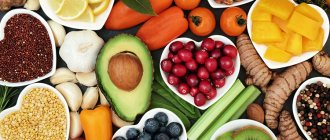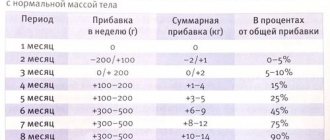Cons of Meal Plans
So, let’s assume that we have a formed nutrition plan, a list of products and a meal schedule attached to them. In theory, it seems convenient - you know what to have for breakfast and what for dinner, you understand that you will get as much protein and nutrients as you planned.
But in practice there is a whole stack of disadvantages.
1. Diet plan promotes antisocial behavior
But any surprise easily invades and ruins your food plans - say, you were invited to a birthday party or you went with your friends (wife, child, colleagues, mother) to an Italian restaurant where there will be wood-fired pizza, lasagna and al dente pasta. This is where the first rough edges begin: you didn’t eat what you planned, you need to put somewhere what you planned, but didn’t eat. It is also not clear how to calculate the KBJU of a dish served outside the home. In general, many questions immediately arise.
In this example, anyone who has tried to eat according to the KBZHU can recognize themselves. As a result, if you live with a diet plan, you consciously (or even subconsciously) avoid any communication related to food.
Many adherents of strict meal plans are afraid of restaurants. There is no need to do this: one hike will not change your diet much. Moreover: experts allow (and even recommend) that up to 20% of your diet be made up of your favorite food, even if it is “junk” food.
It just so happens that feasts and eating together have always been part of our culture. Who doesn’t remember family dinners, New Year’s holidays at the wide parental table with often far from healthy food, but a healthy family atmosphere. The nutrition plan brings a certain resonance, because in pursuit of the schedule, we can literally turn into the heroes of the movie “Bubble Boy,” sometimes sacrificing family happiness.
2. A strict approach to your nutrition plan promotes self-flagellation and breakdowns.
The problem here is that we put ourselves into a routine where we divide our days into “good” and “bad”. Having allowed ourselves a little extra or something that is not included in the nutrition plan, we give up on everything, and at the same wide feast we give ourselves some slack so that we can start all over again.
By the way, this phenomenon can be called “What the hell!” or “Burn it all!” and is described in the scientific literature and our article. Avoid this style of thinking.
3. Lack of variety
The nutrition plan requires regularity. And it often happens that once people find foods and meals with the “ideal” ratio of nutrients, they begin to create a plan from the same foods week after week.
This is fraught with the fact that the body may not receive enough vitamins and microelements. For example, if you completely ignore dairy, you may have a calcium deficiency, if you do not eat meat, B vitamins, do not go out into sunlight, and there is no fish in your diet, you may lack vitamin D. The more varied your diet, the less such problems.
4. The problem is lack of knowledge
The average person who gets involved in experimenting with meal plans is like a passenger in a taxi, where the destination is his goal (for example, losing/gaining weight), and the meal plan is the transport that will get you there (or not). The plan was drawn up by specialists, the transport regularly performs its function, but having delivered you to your destination, it will not tell you what to do next. Often here a person gets lost, and everything returns to normal.
5. Time constraint problem
The more stringent your restrictions are within your meal plan (for example, you somehow set strict time limits - for example, lunch at 2:15 and that's it!) - the higher the chance that you will relapse. And scientific research proves that, according to statistics, after a breakdown, a person finds himself even further from the goal than when he started (again, “thanks to” the “what the hell!” effect).
This is why meal plans that are too rigid end up losing out to more flexible options. Make your diet plan as gentle as possible, one that you can live with for years.
General recommendations
No matter what goal you want to achieve, the main principle of proper nutrition is that it should be varied and contain all the nutrients, vitamins and microelements that our body needs for normal functioning.
Let's remember what proteins, carbohydrates, fats are and which healthy foods contain the most of them.
Squirrels
Proteins are little helpers for building muscles, nails, hair, skin and the nervous system. Let me remind you that the heart is also a muscle.
Proteins contain amino acids, some of which the body cannot produce on its own (as scientists believe). They are of animal and plant origin.
The former are found in chicken, beef, fish, dairy products and eggs. The latter are found in abundance in nuts, soybeans, beans, cereals, vegetables and fruits.
The controversy among nutritionists around them does not subside. Some claim that without animal proteins a person is not able to get all the necessary nutrients. Others believe that it can be done without any problems and the result will only be better.
The latest research by scientists is on the side of the latter. Me too, by the way. For example, Americans have proven that people with arthritis and asthma, when giving up animal proteins, experience a decrease in disease symptoms within two weeks.
And athletes on a plant-based diet in 90% of cases show better physical endurance results than others.
And let's not forget about the thousands of vegetarians who feel great without meat and have excellent health, give birth to healthy children who are vegetarians or vegans from birth.
Carbohydrates
In the context of proper nutrition, we will only talk about complex carbohydrates. Those that do not cause sudden spikes in blood sugar and saturate the human body with energy, promote normal digestion due to their high fiber content.
The lower the glycemic index—the rate at which carbohydrates are absorbed by the body—the more beneficial they are.
So, the main sources of slow carbohydrates are almost all vegetables, except potatoes, non-sweet fruits (oranges, tangerines, grapefruits), berries, mushrooms, porridge (oatmeal, buckwheat), whole grain bread, pasta made from whole flour.
Fats
Another supplier of energy to our body. In addition, fats contain Omega 3 and Omega 6 acids, which are especially necessary for female beauty and health.
But not all of them are equally useful. Trans fats mainly bring only harm. But it’s better to include saturated, polyunsaturated and monounsaturated ones in your diet.
They are found in vegetable oils. Instead of sunflower, it is better to give preference to olive, flax or coconut.
Also healthy fats include nuts (almonds, walnuts, pistachios, etc.), butter and red meat.
Until recently, doctors advised limiting fat intake to 10% in the diet. The American Committee of Dietetics in its recommendations of 2020 canceled this restriction.
Due to the lack of evidence that exceeding this norm can have a negative effect on the body.
Read more in the article “What are the benefits of fats”
On average, in a balanced diet, the percentage of the substances described above looks like this: proteins - 40%, carbohydrates - 40-50%, fats - 10-20%. Their ratio can be adjusted depending on individual needs.
Counting calories
When preparing proper nutrition, it is important to monitor not only the balance of nutrients, but also the calorie content of the menu. Many formulas have been developed to count calories.
For example, let's take the Harris-Benedict formula, which determines the metabolic rate.
For women it looks like this: 447.6 + (9.2 x weight, kg) + (3.1 x height, cm) – (4.3 x age, years).
For men: 88.36 + (13.4 x weight, kg) + (4.8 x height, cm) – (5.7 x age, years).
The resulting value must also be multiplied by the level of physical activity: sedentary lifestyle by 1.2; medium activity - 1.55, high - 1.9
A clear example, let’s say your weight is 70 kg, height 172 centimeters, and age 35 years. We calculate according to the formula.
Result: 1475 calories. Multiply by the average activity level. That works out to 2285 calories per day. For moderate exercise, this calorie content should be left at this level, for weight loss - reduced by 10-20%, for weight gain - increased by the same percentage.
Pros of Meal Plans
Still, you shouldn’t exaggerate. We have nothing against meal plans. In the end, everything has its advantages and disadvantages.
1. Plus: saving time
In a large metropolis, every minute is currency. When everything is coordinated and the list is verified, there is no need to wander absentmindedly around the store, feverishly thinking of what to eat. Don't bother studying labels, calorie information, and sugar content. You can prepare in reserve. A good meal plan is a great example of time management.
2. Plus: everything is clear
Well-thought-out meal plans make everything clear, and you can rest assured that nothing extra will grace your plate.
3. Plus: cost savings
This also means saving money from visiting dubious public catering establishments, so you can now spend money on a new shaker, for example.
4. Plus: less stress
This is a look at the psychological side of the issue from a different angle. With a simple and understandable meal plan for the week, you don’t need to engage in artistic writing on the topic “does this fit into my caloric intake” or “does this have enough healthy nutrients” and you don’t have to worry about it at all.
5. Plus: Improved Energy Levels
This is perhaps one of the significant advantages. This is especially noticeable for those who work hard. With regular healthy eating, energy is distributed evenly, thus avoiding spikes in sugar levels, overwork, ketosis and other unpleasant things. Also, we have repeatedly mentioned that nutrition accounts for up to 80% of the results in the gym.
6. Plus: stability and guarantee of results
When we eat the same foods regularly, it is clear that sudden weight changes are unlikely. Therefore, it is much easier to monitor your weight, and you can predict when, at the next weigh-in, the arrow will show the cherished figure.
Example meal plan. As you can see, you don’t even need to give up chocolates. The main thing: the total amount of KBJU per day and your peace of mind.
Rules for creating a meal plan
So, we have analyzed the main advantages and disadvantages of a planned diet, but we will try to determine the golden mean so that both the body and psyche feel comfortable.
So, the basic rules for building your custom nutrition plan:
1. Determine priorities
It all comes down to the fundamentals - calories, proportions of proteins, fats, carbohydrates, microelements.
WHO recommends that about half of the caloric content of the diet be made up of carbohydrates , focusing primarily on “slow” ones (any cereals, pasta).
Protein intake depends on your goals. If you do nothing, 1 g of protein per 1 kg of body weight per day is enough . If you are doing strength training, the recommendations of the most authoritative scientific institutes are 1.6-1.8 grams per 1 kg of body weight per day . If you reduce the percentage of fat (that is, “get dry”), then you need even more protein than to gain muscle. Various scientific sources recommend from 1.8 to 2.5 grams of protein per 1 kg of body weight .
For endurance athletes (running, triathlon), the authoritative American College of Sports Medicine (ACSM) recommends consuming 1.2-1.4 grams of protein per 1 kg of body weight . It is also important for them to consume enough carbohydrates (up to 8-10 g per kg of body weight per day).
Therefore, when creating a nutrition plan, it is important to focus not on the food itself, but on the nutrients in it.
2. Number of meals
Now the number of lunches/dinners/snacks and breakfasts. The nutrition plan of an office worker, a machinist and a young mother with a child will be different. So take your personal lifestyle, conditions and habits as a basis. By and large, there are no strict restrictions on the number of meals - you can eat 2 or 9 times a day. But we still assume that most people are comfortable eating 3 to 5 times a day in equal portions, regardless of whether they are gaining or losing weight.
3. Product selection
First of all, focus on what you like and requires minimal effort and time to prepare.
Ideally, 80% of your food is meat, fish, dairy products, fruits, vegetables, nuts, oils , up to 20% are products that are not included in the first 80% (for example, sweets, desserts, lemonades, hot sausage sandwiches - whatever), but you adore them and don’t want to do without them . Our favorite scientific scientist and fitness expert Alan Aragon recommends that up to 10% of the diet be made up of favorite, but “harmful” foods - this way the risk of failure is significantly reduced.
In this simple way, you will combine your desires and needs without turning to a fitness guru for advice a la “can I replace buckwheat with rice?” Of course you can! You are now the creative director of your body. In addition, indulgences in the form of 20% of the goodies that you love will not put an end to your long-term goal, but, on the contrary, will strengthen the belief that you are able to combine the sensible with the pleasant.
4. Flexibility
Perhaps the most important point worth explaining. Recall the situation described above with an unexpected visit to a restaurant, it is obvious that this case does not fit into the meal plan - this is where flexibility is needed.
Let's say you're losing weight and your nutrient requirements are, for example, 2,300 kcal, 180 grams of protein, 250 grams of carbohydrates and 60 grams of fat. Then let's look at the nutritional value of what you ate in a restaurant, for example, pizza (you can view the information in an application like Fatsecret or in the calorie tables on Zozhnik): 840 kcal, 40 g of protein, 110 g of carbohydrates and 23 g of fat. This is a “hard to describe” product, but consuming it once will not destroy your goals and, whatever one may say, this food is also quite rich in nutrients. Thus, we can selfishly try to balance our plan within the calculated BZHU, which will allow us to avoid antisocial behavior.
At first it seems crazy and a test of your willpower, but with a flexible approach based on your favorite products, you gradually come to understand that you are in control of the situation, so breakdowns and psychological setbacks tend to zero.
Likewise, the issue of diversity is removed. More knowledge, more variety with a caveat to quantity. And if you look closely, a person gradually moves away from a strict nutrition plan altogether, turning it into his lifestyle. Thoughtful and balanced.
Example meal plan.
Once again, a step-by-step meal plan:
Step 1. Calorie norm: calculate our norm (calculator under the Zozhnik logo), based on priorities. ↓ Step 2. Macroelements: we break food down into BJUs based on our goals. ↓ Step 3. 80/20: make a plan without excluding certain products/product groups. Focus on ⅘ healthy and ⅕ food that you personally like. ↓ Step 4. Flexibility: remember that one day “not according to plan” is not the end of the world . We just move on and remember about long-term goals. ↓ Step 5. Nutrition plan as a lifestyle: advanced level . Now you have all the techniques to turn your personalized nutrition plan into a lifestyle. Combine, analyze and gradually move away from rigid boundaries, guided by knowledge.
On Zozhnik there are several ready-made daily rations of 4-5 meals with calculated KBZHU:
- Chinese style diet for 1400 kcal
- Caucasian style diet for 1430 kcal
- Diet for 1500 kcal
- Very simple diet for 1555 kcal
- 1565 kcal diet for those who don’t like to cook
- Brazilian style diet for 1577 kcal
- 1593 calorie raw food diet
- Vegetarian diet for 1600 kcal
- Fish day for 1600 kcal
- Delicious diet for 1665 kcal
- Anti-crisis menu for 1717 kcal
- Hearty diet for 1910 kcal
These diets can serve as a basis and example for creating your weekly nutrition plan.
How to create a nutrition program?
If you eat right and exercise right, but are not losing weight, you only think that you are eating and exercising right. Why don’t diets “work” and what should you consider when creating a nutrition program? Proper nutrition is 70% of success in achieving any fitness goal, be it losing weight or gaining muscle mass. And a seemingly small mistake can ruin all your efforts.
Standard diets designed for the “mass consumer” either do not work or their effect is short-term. Why? Because people are all different, and the nutrition program should be drawn up taking into account the individual characteristics of the body, the person’s activity, and his goals. It is impossible to take one diet and “prescribe” it to everyone who is losing weight, create another menu and “prescribe” it for gaining muscle mass. We are all unique, and what may work for one may not work for another.
So, what is a real, effective nutrition program based on?
1. Eating behavior assessment The first stage is to identify the characteristics of the diet and the mistakes that we make every day. Therefore, it is worth starting with an analysis of your food diary. For a week, write down what you eat: time, products, approximate volume. And then see how your diet matches the classic recommendations.
The basics of healthy eating come down to a few simple rules. You need to eat 5-6 times a day, approximately every 2.5-3 hours. There should be small snacks between breakfast, lunch and dinner - this way the metabolism accelerates, and the body does not need to store fat in reserve. In the morning, long carbohydrates (cereals) are recommended, which provide energy; the closer it is to the evening, the more protein foods and fewer carbohydrates there should be. Sweets, including fruits, can be eaten in moderation in the first half of the day, vegetables - at any time. Cereals and pasta as a side dish are acceptable for lunch, but for dinner it is better to accompany fish or meat with vegetables. An hour and a half before bedtime, you can eat some exclusively protein foods, for example, 100-200 g of cottage cheese. Fatty meat and dairy products, semi-finished products, fried foods, flour, and sugar are excluded.
Why is it important to know exactly what foods you should eat and at what time? Here's a simple example. “In my practice, there was a case when a client’s weight stopped decreasing, despite the fact that he strictly followed all nutrition recommendations and exercised regularly,” says Orange Fitness personal trainer Alexander Mnatsakanyan. - We started to figure it out. It turned out that he put honey and nuts in the allowed evening cottage cheese - the last protein meal about 1.5 hours before bedtime. From the client’s point of view, this is a trifle, because it tastes better with honey! But as soon as sugar and extra calories in the form of honey and nuts were removed from the cottage cheese, the weight loss process resumed.”
2. Calculation of basal metabolism, determination of energy consumption during the day. Basic metabolism is the amount of energy in kilocalories that the body needs to carry out life activities at rest (that is, if you just lie down and eat). Any motor or mental activity requires additional energy expenditure. Each person has a different basal metabolic rate, which means the number of calories needed for life is different.
Most often, the Harris-Benedict formula is used to calculate the basal metabolic rate: for men: 66 + (13.7 * weight) + (5 * height in cm) – (6.8 * age) for women: 655 + (9.6 * weight) + (1.8 * height in cm) – (4.7 * age)
Most formulas take into account three indicators: gender, age and weight of a person. However, a more accurate calculation can be obtained if you know the ratio of fat and muscle mass. 1 kg of muscle tissue spends approximately 200 kcal per day just to “maintain itself,” while 1 kg of fat requires three times less energy. Therefore, the most accurate basal metabolic rate can be obtained during a bioimpedance analysis of body composition.
Next, having determined your basal metabolic rate, you need to understand how much energy you spend during the day on physical and mental activity. To determine this indicator, physical activity coefficients are used (basal metabolic rate is multiplied by a coefficient): 1.2 – office work, absence or minimum physical activity; 1.375 – low physical activity, simple workouts 1-3 times a week; 1.55 – moderate activity, 3-5 workouts per week; 1.725 – increased physical activity, 6 workouts per week; 1.9 – very heavy physical activity, training twice a day.
3. Determine the number of calories depending on your goals. We understand how many calories the body needs in order to live in the mode you have chosen and in the current weight. Now, it is important to understand how many calories you need to “give” to the body in order to force it to adapt in the direction we need. If the goal is to burn fat, then the total caloric intake should be less than the required energy expenditure - then the body will have to obtain energy by burning fat. If the goal is to build muscle mass, then it is important to provide the muscles with a sufficient amount of building material.
When losing weight, we want to achieve results as quickly as possible, so there is a temptation to reduce the calorie intake by 50% or more. You shouldn’t do this: stress on the body and psyche will not allow you to maintain a diet for a long time. Such a restriction is fraught with problems with the gastrointestinal tract, a lack of vital elements and even greater fat deposition with each breakdown. It is most effective to reduce gradually, ultimately reducing caloric intake by about 15-30%: it will not be so difficult, and the body will have to take the lack of calories from fat reserves.
If the goal is to build muscle mass, then calories should be increased by 5-15% of the required norm. If you eat more, you can gain weight not through muscle, but through fat.
Please note: these are average standard figures and a very simplified approach! The ideal option would be the recommendations of a trainer or fitness consultant who can correctly assess energy costs and calculate the required caloric intake.
4. Create an individual nutrition plan Based on the calculated calories, a diet is drawn up: the volumes are distributed among meals depending on the life schedule, as well as according to the ratio of proteins/fats/carbohydrates. Products suitable for each meal are selected. For example, with five meals a day, the distribution of calories could be as follows: breakfast - 25%, snack - 10%, lunch - 30%, snack - 20%, dinner - 15%. These are just the main points that are important to know when planning your diet. But there are a lot of nuances that only a specialist can take into account.
Roman Timofeev, nutrition specialist, personal trainer at Orange Fitness “You can find a huge amount of information on nutrition on the Internet, but this information must be used wisely. Confusion in the head after reading many different sources, incorrect application of the received data ultimately leads to problems. A common case is a sudden loss of weight after another recommended diet of boiled carrots and kefir, and then the same sudden loss of weight - this is how a person starts a wheel of repeated mistakes, begins to torture himself and drive his weight around in a circle. In such cases, a coach or specialist is needed who can organize and systematize the information received, separate the wheat from the chaff and help achieve the desired stable result, form the right habits and preferences. There is only one BUT: if the efforts come only from the specialist, and there is no proper persistence on the part of the mentee, the result will be “Sisyphean work” and disappointment from wasted time and money.”
Making a meal plan: more options
Here are some more tips for creating a personalized nutrition plan. It is worth noting that these techniques are used by both foreign and domestic fitness trainers.
● Composite meal plan We create several meal plans and alternate them so as not to repeat ourselves week after week and eat more varied meals.
● “Five+Two” Plan We make a thorough plan for the work week, and leave the weekends free for flights of fancy. It will be very helpful for people who are busy during the week, but have time on the weekend to pamper themselves on the weekend.
● Proportional plan We draw up a plan based on everyday products, taking into account the BZHU and fill in the remaining BZHU norm freely, depending on the circumstances. For example, we know that for breakfast we prefer a protein omelet with vegetables, fruits and coffee with milk; cottage cheese - after training and kefir - at night. What should we add to our lunch and snack plan? Here, completely rely on your taste preferences within normal limits.
It is worth noting that it is the third option that subsequently serves as a good help for turning such a nutrition plan into a lifestyle. Health to everyone!
Sources: revivestronger.com
Translation for Zozhnik: Sasha Carling










